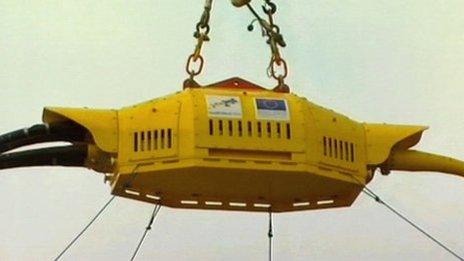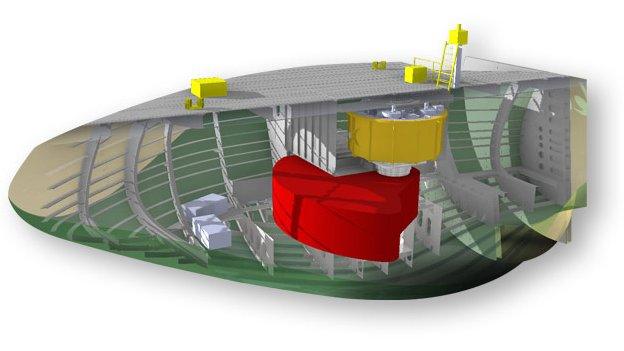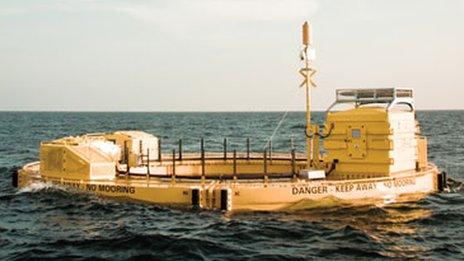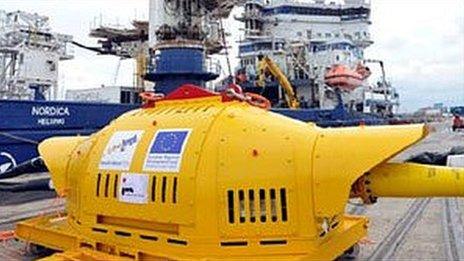Hayle Wave Hub: Carnegie Wave Energy to use seabed 'socket'
- Published

Carnegie's Ceto devices are fully-submerged
A new company has announced it will test a sea energy device using an electrical "socket" in the sea bed off Cornwall.
Australian firm Carnegie Wave Energy said it planned to start trialling equipment at the Wave Hub, located 10 miles (16km) off Hayle, in 2016.
The £30m Wave Hub consists of a giant "socket" on the sea bed, which is connected to the power grid by an underwater cable.
The hub was installed in 2010.
Carnegie's UK arm, Ceto Wave Energy UK, said it hoped to produce 3 megawatts (MW) of power with the option of expanding it to 10 MW later.
The company said its fully-submerged Ceto device, named after a Greek sea goddess, used the power of waves to produce high pressure water to generate electricity.

The Wave Hub was put into the sea about 10 miles off Hayle
The Wave Hub - which is publicly-owned by the Department for Business, Innovation and Skills - aims to allow companies to test their devices.
Carnegie is the fifth company to express an interest in using the facility.
In February, Finnish company Fortum announced it was to test equipment there..
That followed wave energy company Seatricity announcing last year that it was to plug a device into the Wave Hub.
Engineering firm Fred Olsen and Irish firm Ocean Energy also previously said they were to deploy devices.
- Published24 February 2014

- Published10 December 2013

- Published6 September 2013

- Published11 June 2013

- Published20 February 2013
